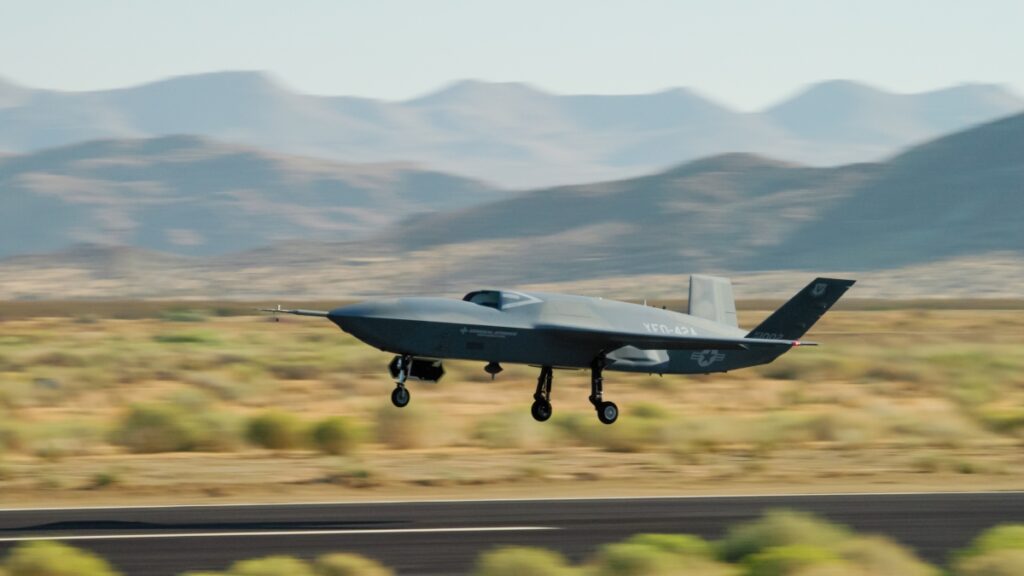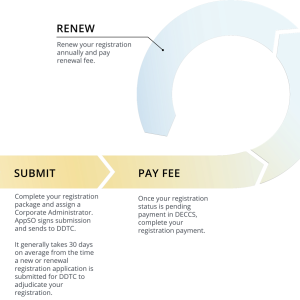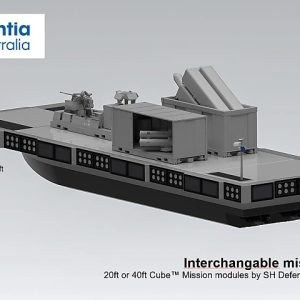
Washington’s long‑planned push to field autonomous “drone wingmen” took a concrete step this week as the U.S. Air Force confirmed that Collaborative Combat Aircraft flight testing is underway. The first flight belongs to General Atomics Aeronautical Systems’ YFQ‑42A; Anduril’s YFQ‑44A is slated to join soon. Beyond the headline, the program’s rapid cadence, force‑design intent, and procurement timeline point to a decisive shift in how the Air Force intends to generate mass and survivability in contested airspace.
Key facts
- Milestone: Vendor‑led flight testing has begun with the YFQ‑42A; YFQ‑44A to follow.
- Test venues: Developmental trials at Edwards AFB; operational assessments by the Experimental Operations Unit at Nellis AFB.
- Force prep: First Aircraft Readiness Unit planned at Beale AFB to sustain “fly‑ready” posture and rapid deployment.
- Scale & timing: Initial fielding objective up to ~1,000 air vehicles; competitive production decision targeted for FY2026.
- Design lineages: YFQ‑42A evolves from the XQ‑67A/OBSS path; YFQ‑44A derives from Anduril’s Fury (via Blue Force Technologies acquisition).
What just flew—and why it matters
The YFQ‑42A’s first sortie validates the program’s sprint from concept to flight in barely over a year, a pace that contrasts sharply with legacy acquisition cycles. For operators, the signal is clear: the Air Force is moving from PowerPoint to flightlines, with Collaborative Combat Aircraft flight testing designed to harden interfaces, autonomy behaviors, and human‑machine teaming tactics ahead of a production down‑select.
CCA Increment 1 is scoped for air‑to‑air missions alongside fifth‑generation fighters, initially targeting functions such as sensing, counter‑air support, and tactics that complicate an adversary’s kill‑chain. The early flights are thus less about spectacular maneuvers and more about validating safety cases, command‑and‑control links, mission system integration, and the disciplined test cards that unlock higher‑risk envelopes.
Test campaign: from Edwards to Nellis and Beale
Developmental tests at Edwards AFB will iterate the basics—engine/flight controls, datalinks, mission computers, and autonomy stack integration—progressing from low‑risk patterns to more complex envelopes. In parallel, the Air Force’s Experimental Operations Unit at Nellis AFB will run “operational assessments,” translating engineering progress into viable tactics, techniques, and procedures (TTPs). This is where human‑machine teaming concepts, kill‑web choreography, and battle‑management techniques are refined under realistic constraints.
Beale AFB will host the first Aircraft Readiness Unit for CCA, a maintenance and logistics construct intended to keep aircraft “fly‑ready” and deployable at a moment’s notice. In practical terms, that means pre‑positioned spares, streamlined turn‑around processes, and tooling to update autonomy models at the edge without breaking cybersecurity or safety cases.
Industrial paths: two designs, two philosophies
Although both aircraft share the same mission class, their lineages hint at different design bets. The YFQ‑42A descends from GA‑ASI’s XQ‑67A/Off‑Board Sensing Station (OBSS) lineage, which prioritized modular payload bays and a cost‑conscious airframe architecture. That evolutionary path favors reuse of proven subsystems and interchangeable mission kits—useful for scaling production and sustaining fleets under attrition pressure.
Anduril’s YFQ‑44A derives from the Fury design acquired with Blue Force Technologies. Fury emphasized manufacturability and rapid iteration, embracing commercial components where feasible to compress cost and lead time. If it holds in flight test, this approach strengthens the “affordable mass” proposition by enabling distributed production across a broader supplier base.
From prototypes to affordable mass
The Air Force’s stated objective remains a competitive production decision in FY2026 and an initial inventory that could scale toward roughly a thousand air vehicles. That scale is not about replacing pilots; it is about saturating an adversary’s defenses and restoring options when exquisite assets are too few—or too valuable—to risk deep in contested airspace.
Realizing “affordable mass” depends on three levers that will be exercised during Collaborative Combat Aircraft flight testing and beyond. First is unit cost: designs must stay on the “low end” where attrition is tolerable. Second is production agility: tooling, digital threads, and component choices must support surge manufacturing. Third is operational utility: autonomy and C2 must deliver measurable effects when paired with F‑22, F‑35, and future NGAD platforms, not just lab demos.
Autonomy, C2 and the playbook for teaming
Getting autonomy right is as critical as airframe performance. The parallel autonomy effort will decide how missions are distributed between human pilots and uncrewed teammates, how authority is delegated, and how the system behaves under degraded communications. Expect rigorous focus on edge processing, contested‑spectrum resilience, and assurance methods that keep the human “on the loop” without flooding them with tasks.
On the C2 side, the test community will probe machine‑to‑machine coordination, cooperative sensing, and target de‑confliction. The goal is a playbook of repeatable TTPs that scales from two‑ship experiments to mixed packages with manned fighters, tankers, and ISR nodes, all while preserving timeline discipline and minimizing cognitive load.
Risks to watch
Two near‑term hazards could slow momentum. Budget turbulence—continuing resolutions, shifting priorities, and macro cost pressures—can squeeze test tempo and long‑lead materials. In parallel, integration risks loom: validating safety cases, EMI/EMC compliance, secure datalinks, and cyber‑hardening across multiple vendors is non‑trivial. The program will also have to demonstrate sustainment realism: spares pipelines, health management, and field‑level repair concepts that fit within squadron rhythms.
Finally, ethics and policy questions will stay in the foreground. The Air Force’s framework for human accountability, positive identification, and weapons release authorities must be transparent and testable. Those policy guardrails will shape both software architectures and how operators are trained to task CCAs under the stress of high‑end combat.
“In record time, CCA went from concept to flight—proving we can deliver combat capability at speed when we clear barriers and align around the warfighter.”— Air Force Secretary Troy Meink
What this means for allies and industry
For allies, the message is twofold: teaming concepts are leaving the lab, and partner air forces should expect exportable derivatives that plug into coalition kill‑webs. For industry, the bar is moving from demonstrations to reproducible, supportable products. Vendors that can prove manufacturability, interoperability, and rapid software iteration—under the scrutiny of independent test—will be best positioned for the production decision.
Context and related coverage
For a deeper dive into counter‑UAS and air‑defense implications, see our analysis on UAV swarms vs. SHORAD. As CCA matures, short‑range air defenses will need faster detect‑to‑engage loops and smarter resource allocation to handle mixed‑quality, mixed‑velocity threats.
Official materials worth bookmarking include the U.S. Air Force’s updates on ground and flight testing, vendor press releases, and detailed primers on the YFQ‑42A/44A designations. These provide authoritative context while the test campaign unfolds.
References
- Breaking Defense. “Air Force’s drone wingman program takes flight.” Accessed Aug. 29, 2025. Link
- U.S. Air Force. “DAF begins ground testing for Collaborative Combat Aircraft; selects Beale AFB ARU.” May 1, 2025. Link
- GA‑ASI. “GA‑ASI Marks Another Aviation First With YFQ‑42A CCA Flight Testing.” Aug. 27, 2025. Link
- DefenseScoop. “Air Force designates CCA drones as first unmanned fighter aircraft.” Mar. 4, 2025. Link
- GA‑ASI. “GA‑ASI Makes First Flight of XQ‑67A OBSS.” Feb. 29, 2024. Link
- Anduril. “Anduril Industries acquires Blue Force Technologies.” Sep. 7, 2023. Link












